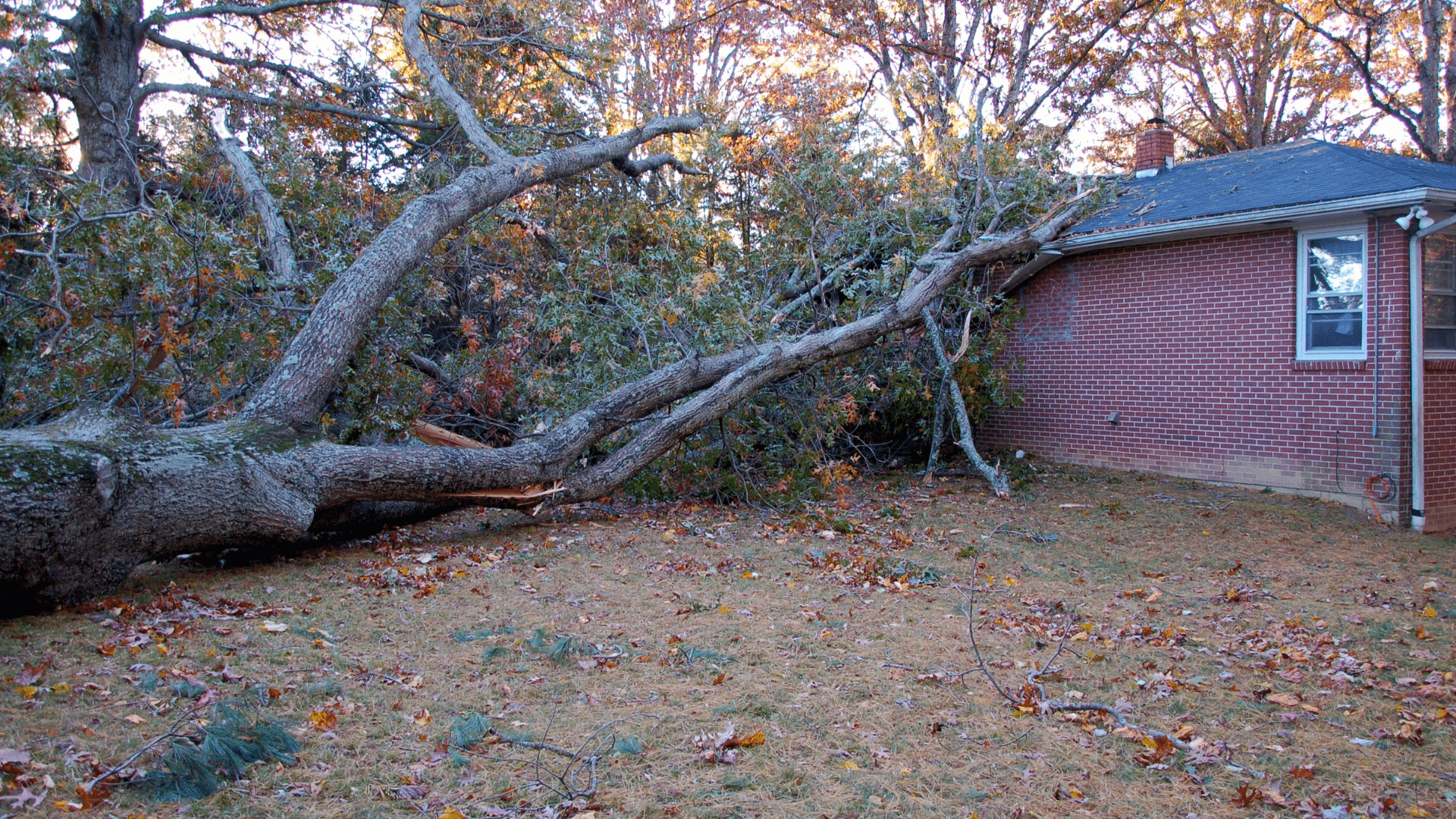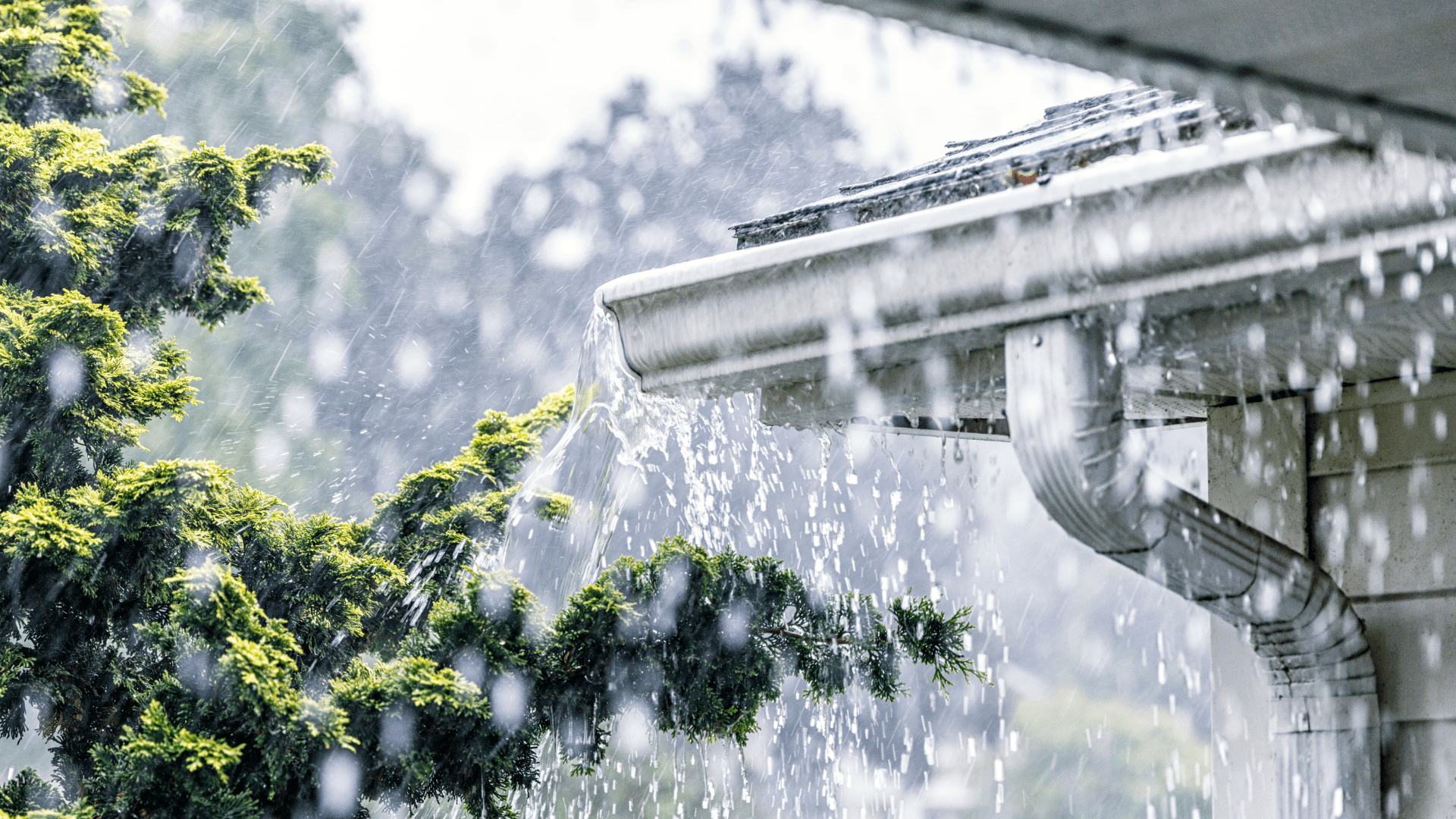Many homeowners can attest that any major storm is cause for concern. They recognize that a
large storm puts their roof at risk for damage of varying magnitudes. Your roof is an essential
part of your home as it serves as a barrier of protection and insulation. So, if you experience roof
damage because of a storm, it’s important that you act fast. You need to determine and identify
the damage then take steps to repair the issue. In this guide, we’ll explore the kinds of damages
caused by storms and how you can go about handling them.
Table of Contents:
Common Roof Damage Caused by Storms
Water Damage
Pooling and water damage can happen because of extensive rainfall. Without proper drainage or if your roof has weakened spots, the heavy rainfall can cause sunken spots or leak through any damaged shingles. Also, if you have clogged gutters, the rainwater cannot run off the roof properly leading it to pool at your gutters. This pool of water can seep into the weak spots at the edge of your roof. Repairing a roof after water damage typically costs around $400 to $700 because a leak can spread quickly to other parts of the home if not taken care of quickly.
Wind Damage
During storms, wind gusts can be anywhere between 40 to 75+ mph which can lead to severe
damage to your roof’s shingles. High winds can tear off your shingles or even lift and curl them,
exposing the protective underlayment beneath. When that underlayment is left exposed, your
roof is at risk for leaks seeping through into your home. In this case, you’ll need to have new
shingles installed. The cost of this installment is dependent upon the types of materials used. For
example, asphalt shingles will cost you around $400 to $825 whereas metal shingles can cost
anywhere between $550 to $1350
Hail Damage
While severe hail is not common, it can happen, and it can be enough to slough off the granules that are the first protective layer of your shingles. This can lead to dents in your shingles and hail can even crack and peel up the edges of your shingles. Again, this leads to the exposure of your underlayment. This damage will require you to replace your shingles and the cost of your replacement will depend on the type of shingles.
Damage From Debris
During a storm, all kinds of debris such as sticks and branches can blow onto your roof. This flying debris can cause damage especially if it’s being carried by gale-force or hurricane-force winds. The repair you’ll need is dependent on the degree of damage inflicted by the debris. However, generally speaking, roof repairs run from $364 to $1556 with the average cost being $949.
Tree Damage
During a storm, weakened trees may collapse onto your roof, causing damage to shingles and even the general structure of your roof. The subsequent damage can be substantial, perhaps requiring an emergency roof repair or a total roof replacement. Still, according to the Insurance Information Institute, a standard homeowner’s insurance policy covers tree damage. So, your insurance will most likely help cover the cost of the roof repair/replacement.
Lightning Damage
Although lightning striking your roof may be rare, you should still be aware of the severe damage it can cause. Lightning can penetrate shingles, tear apart gutters, damage your attic, or collapse your roof. Lightning can even dislodge chimney bricks. When lightning strikes near electric wires, a fire may start. If a lightning bolt strikes your roof and causes damage, you must act quickly. You’ll need a thorough inspection and a possible emergency roof repair. Because the damage caused by lightning can be so extensive and severe, the cost for repairs can range from $500 to $2500 or more.

Roof Storm Damage Checklist
Wet spots on the ceiling:
If you have a major leak, you may notice water stains on your ceiling. They can appear quickly or weeks later once the water has made its way through the damaged shingles, into your attic floor, and through your upper floor ceilings. If you want to catch a leak early, you may want to head up to your attic, after the storm, and check for wet spots on the attic ceiling and floor. You can even trace the leak to see where it stems from.
Missing or damaged shingles:
Missing or damaged shingles should be relatively obvious even if you’re looking up at your roof. But if it’s safe to do so, you can get up on a ladder for a closer look. If you do find missing and or damaged shingles, you want to take action immediately. The first step is using a tarp to cover the damaged area to protect your home from further damage and leaks. After that, you’ll want to contact a professional for their services.
Discolored or dented shingles:
If you experienced severe hail, you’ll likely find that dents or round spots of discoloration have been left on your shingles. The dents should be noticeable, but you’ll need a closer inspection to find any discoloration. This discoloration is actually the exposed dark layer of asphalt underneath the shingles. This darker color will be visible through the shingle dent or missing layer of granules.

Tips for Post Storm Roof Damage
Ensure safety:
The very first thing you should do is make sure you and your family are safe in the aftermath of the storm. Make sure that you are not at risk of any down power lines, flash floods, or any other dangers before you check for any roof damage.
Visually assess your roof:
Once you’ve deemed it safe enough, do a walk-through around your house and take a look up at the roof for any potential storm damage. You can use a ladder to take a look, but it may be safer to enlist a professional to do that. If you do find damage, it needs to be covered with tarp right away to prevent any further harm.
Look around the rest of your property:
Check for dents in your siding, gutters, roof vents, windows, etc. Other parts of your home could be damaged aside from your roof. Your home’s overall performance and function relies on each aspect of your home.
Remember to keep calm:
Discovering storm damage can be overwhelming as a homeowner especially when you consider the repair process and the costs associated with it. But remaining calm and avoiding panic is the most important thing you can do as a homeowner. For any sort of damage, the faster you get help, the easier the repair process will be. Acting immediately can help you avoid any future issues.
Contact your homeowner’s insurance provider:
If you find significant damage to your home after a storm, you need to get in touch with your homeowners insurance provider right away so you can file a claim based on their requirements. If you provide proper notes and photographs of the damage, you can get adequate compensation. The company may also send its own inspector to your home to assess the damage your roof sustained.
Hire a roofing contractor:
Once you’ve determined that your roof has sustained damage, you’ll want to contact a roofing contractor right away. You can have a professional inspect your roof and give you an expert opinion. From there, you can enlist a qualified roofer to repair your roof rather than delaying repair or attempting to do it yourself.

Contact Go Construction for Roof Repairs Caused by Storms
The best thing you can do after you’ve determined that your roof has sustained damage is contact a roofing contractor. You can begin and end your search for a contractor right here at Go Construction! We offer you top-tier quality products and services. Our team of roof repair experts are highly skilled and can work in tandem with your needs. Your worries end with us as we can not only restore your roof but enhance it as well. So don’t hesitate to reach out to Go Construction today!


